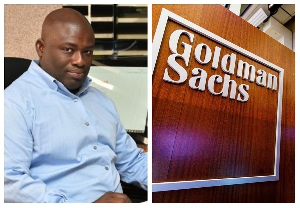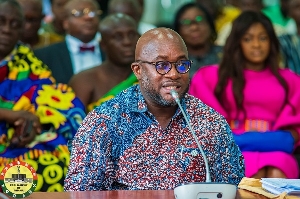Opinions of Thursday, 22 December 2022
Columnist: Kennedy Damoah
Ghana’s economy: A tale of foreign aid, misguided policies
In July 1967, one year after Dr. Kwame Nkrumah was overthrown by a military junta, the CIA (Central Intelligence Agency) described Ghana as a country in a “political and economic malaise”. Politically, there was a fear of an imminent coup. Indeed, in April of 1967, a coup to overthrow the National Liberation Council (NLC) had been aborted.
Economically, Ghana was on a brink of collapse. Dr Nkrumah had “squandered Ghana’s $500 million foreign exchange reserve” on his ambitious projects. The country had about $700 million in foreign debt. Ghana’s economic and political problems, the report concluded, “is likely to persist for some time. [That’s], there can be scant assurance that over the next few years even with greatly increased external economic assistance, Ghana will be much more than a debt-ridden West African coastal state with uncertain political stability and orientation”.
In the years that followed, Ghana received financial support from international organizations and foreign donors. However, political instability, national discontent, and the huge foreign debt affected the economic growth of the country. In the end, the economy remained lethargic, with little to no prospect for meaningful economic growth that could improve the lives of Ghanaians.
The impulse of political leaders was to borrow more to maintain their political power, as long as they could or wait for another military junta to take over. (Despite the economic hardships, Ghana has enjoyed relative political stability and a peaceful transfer of power from one political party to another since the adoption of the 1992 constitution).
In 1989, the New York Times published an article titled: “Ghana, Once ‘Hopeless’, Gets At Least the Look of Success”. After Ghana’s economy had collapsed in the early 1980s, the world bank introduced the free market economy (officially referred to as the structural adjustment program). This economic model, it was understood, takes away the “destructive” hand of government and substitutes it with the “unseen” (and better) hands of the market. Before the arrival of the World Bank, “Ghana was really a hopeless place - everybody, both Ghanaians and donors, were abandoning the place”, the World Bank’s representative in Ghana said at the time.
To stabilize the economy, the Government ended most price controls and devalued the cedi. The government reduced the number of public sector employees and sold dozens of state-owned companies. “Inflation dropped to 20 percent, from 123 percent in 1983”. Both donors and investors responded and in 1987, Ghana was the “largest recipient, after India and China, of the [World] bank's interest-free International Development Association loans”. The economy stabilized, at least according to the statistics. And as it is today, many argued that the financial turnaround, which was mainly due to foreign aid, did not translate into improved living conditions for the masses but made the political elites rich.
On February 27, 2002, the IMF and the World Bank Group’s International Development Association (IDA) announced their agreed deal “to support a comprehensive debt reduction package for Ghana under the enhanced Heavily Indebted Poor Country (HIPC) initiative”.
The agreed package was $3.7 billion. At the time of this agreement, poverty in Ghana had reduced from 51.7% to 39.5% between 1991/92 and 1998/99. This trend continued and in 2012, Ghana’s poverty rate had been reduced to 21%. But it was also observed that “poverty remains a systemic problem in Ghana, particularly in the northern regions of the country where it is closely linked to low access to basic infrastructure, health services, and education”.
Ghana has requested financial assistance from the IMF 17 times since 1966 (including the ongoing discussion). The Structural Adjustment Programs in the 1980s and the HIPC program in the early 2000s are among the most consequential ones. The IMF and World Bank, as their names suggest, are international organizations and every member of the international community can request their support in difficult times.
However, instead of working to fundamentally restructure the economy for homegrown solutions, Ghana has over the past decades, particularly, following the mid-1980s economic restructuring, developed a foreign aid and debt economy. In essence, Ghana opted for a financialization economy instead of a manufacturing based/industrial economy.
Manufacturing based economy is local, works for many, and employs people with varied experiences. But the financialized economy works for a few people by “increasing [the] importance of financial markets, financial motives, financial institutions, and financial elites in the operation of the economy and its governing institutions, both at the national and international levels”. The financialization economy is characteristically a borrowing and deficit-run economy. Evidently, Ghana’s debt rose to about ₵391 billion early this year, and the debt to GDP is projected to hit 104% by the end of the year.
A Financialized economy makes the few very rich while making the lives of the majority precarious. The gap between the rich and poor in Ghana is enormous. According to OXFAM International, an anti-poverty and inequality organization, the economic growth in Ghana in the past two decades is a “partial success”. Despite a reduction in absolute poverty, the country's wealth has gradually but steadily shifted into the hands of a few. “The wealthiest 10% of Ghanaians now share 32% of Ghana’s total consumption – more than is consumed by the bottom 60% of the population combined, while the very poorest 10% of the population consumes only 2%”.
In the health sector, “less than 2% of the poor are [meaningfully] covered by the National Health Insurance Scheme”. And this has had detrimental effects on the health and even life expectancy of the poor. “A child born in Ghana to one of the wealthiest families is three times more likely to make it past their fifth birthday than a child born to a poorer family”. On the education front, “nearly a third of the poorest children in the Northern Region have never been to school, compared to just 5% of the wealthiest”.
Girls have been disproportionately impacted. And if the education of women is the education of a nation, Ghana is far from being an educated nation. With poor health and no formal education, many Ghanaians are working poor. They cannot find jobs in the “formal” sector. The traditional agricultural practices are no longer reliable due to unpredictable rainfall – and drought.
This foreign aid and debt economy is likely to persist until the country can generate enough internal revenue, cut waste, and reduce corruption. Ghana’s tax on GDP in 2021 was 13.5%. Meanwhile, the debt to GDP in the same year was 81.80%. In 2020, Ghana spent $12 billion on imports but received $9 billion in export. The service sector constitutes about 50% of Ghana’s GDP.
However, government restrictions and political favoritism have stymied genuine innovations in this sector for broad economic development. The agricultural sector is the third largest sector of Ghana’s economy. Meanwhile, 50% of Ghana’s labor force are employed in the agricultural sector. Most of these are non-commercial farmers.
Ghana’s economy is at the mercy of international price fluctuations due to the limited export commodities (mostly gold, cocoa, and oil), which are unfortunately exported without added value. More so, Ghana has little stake in these resources. Oil, for example, is just 3% of Ghana’s GDP. Similarly, Ghana receives less than 10% of the proceeds from gold.
Without a new economic policy with less appetite for borrowing and the commitment to cut waste, reduce corruption while investing in Research and Development, most Ghanaians will continue to be poor – with no hope for improved living conditions.













